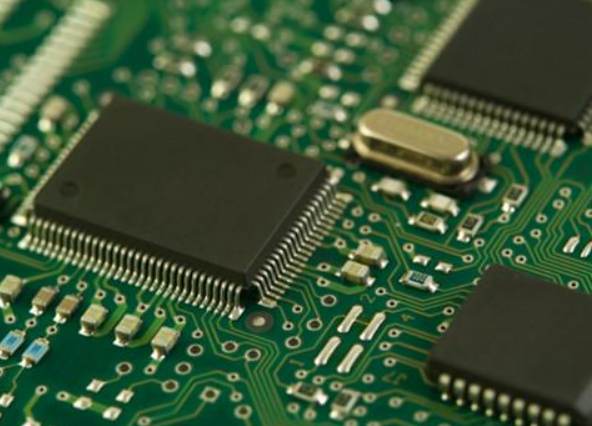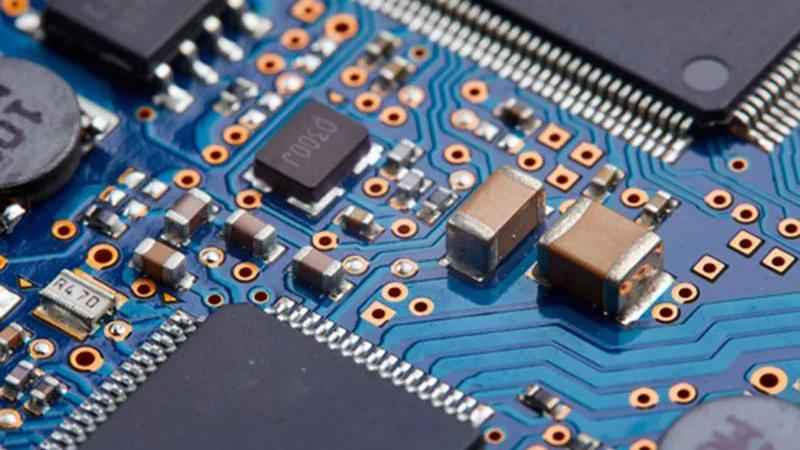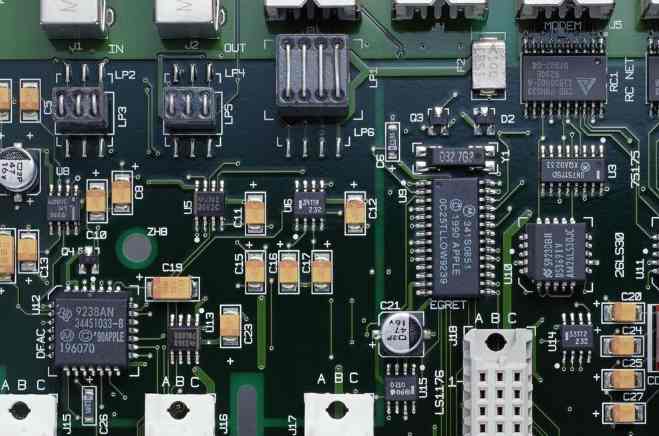
In modern high speed digital circuit design, the influence of hole on PCB board signal integrity cannot be ignored. In high-speed design, multilayer PCB is often used, and in multilayer board, signal transmission from one layer of interconnect to another layer of interconnect needs to be connected through the hole. When the frequency is lower than 1GHz, the hole can play a good connection role, its parasitic capacitance and inductance can be ignored. When the frequency is higher than 1GHZ, the influence of the parasitic effect of the hole on the signal integrity cannot be ignored. In this case, the hole presents as a breakpoint of impedance discontinuity on the transmission path, resulting in signal integrity problems such as signal reflection, delay and attenuation. When the signal is transmitted to another layer through the hole, the reference layer of the signal line is also the return path of the signal through the hole, and the return current will flow between the reference layers through the capacitive coupling, and cause ground elastic and other problems.
The test plates with different layers were made. The design value of signal through hole aperture was 0.20-0.50mm, and the design of through hole length was 0.5-2.0mm. Different sizes of pad and reverse pad were designed. In order to study the influence of redundant short columns on the impedance and loss of the hole, the back drilling technology was used to control the depth of the back drilling to obtain a single end hole with different short column lengths, and the length of the hole was 0.20-0.80mm.
Test plate production process: opening → drying → inner dry film → inner etching → inner AOI→ brown → laminating → drilling → de-drilling → copper plating → outer plating → tin plating → back drilling → outer etching → outer dry film → graphic plating → outer etching → outer AOI→ solder resistance → gold plating → milling......
After the completion of the test plate, the TDR curve and S parameters of the single terminal line with the hole were measured by the vector network analyzer. The through-hole impedance value was obtained by the changes of the TDR curve at the through-hole, and the through-hole loss was analyzed by the S parameter.
Influence of aperture parameters on impedance continuity
Through hole length is one of the main factors affecting through hole inductance. For the top and bottom holes, the hole length is equal to the PCB board thickness, due to the increasing number of PCB board layers, PCB thickness often reaches more than 5 mm. However, in the design of high-speed PCB, in order to reduce the problems caused by the hole, the hole length is generally controlled within 2.0mm.
If the through-hole length increases from 1.0 mm to 2.0 mm, the through-hole impedance also increases rapidly due to the rapid increase of through-hole inductance, that is, the larger the through-hole length, the worse the through-hole impedance discontinuity. When the hole length is within 1.0 mm, the impedance change caused by the hole can be controlled within 10% by the optimization of the hole parameters. However, when the hole length is more than 1.5 mm, the problem of the impedance discontinuity becomes difficult to solve.
When the aperture increases from 0.20 mm to 0.50 mm, the impedance decreases from 58.4 ohm to 52.5 ohm. This is mainly due to the increase of through-hole capacitance after the increase of through-hole aperture, and through-hole impedance is inversely proportional to the capacitance. For holes longer than 2.0 mm, the impedance continuity can be improved to a certain extent by increasing the aperture. When the pore length is 1.0 mm or less, the optimal pore size is 0.20-0.30 mm.
When the diameter of through-hole pad increases from 0.45 mm to 0.55 mm, the through-hole impedance decreases from 57.5 ohm to 55.2 ohm. This is due to the increase in the size of the through-hole pad, which will also lead to the increase in through-hole capacitance. It can be concluded from the test results that the through-hole impedance decreases about 0.5-0.7ohm when the size of through-hole pad increases by 0.05mm.

Influence of ground hole on through hole impedance and loss
For a 4-layer board, when the signal is transferred from the top transmission line to the bottom, two things can happen. In this case, when the signal passes through the hole, the return path returns through the two layers. The uncontrolled return current produces ground elastic effect, and the electromagnetic wave (EM) generated when the signal passes through the hole transmits on the two layers, leading to voltage fluctuations and signal integrity problems. The second is to increase the grounding hole, this time the grounding hole provides a complete return path for the through hole signal, but also provides a reference hole for the through hole signal, so as to improve the impedance continuity of the signal through the hole, and reduce the signal loss.
The through-hole impedance decreases as the number of grounding holes increases. This is because with the increase of the number of ground holes, the capacitance between signal through holes and ground holes increases, that is, adjusting the number of ground holes can effectively control the impedance of the hole. When the distance between the signal hole and the ground hole increases from 0.40 mm to 0.70 mm, the through-hole impedance keeps increasing. Similar to the transmission line using the ground as the reference layer, after adding ground holes, the signal through holes use the ground holes as the reference holes. When the distance between the signal hole and the grounding hole increases, the capacitance between the signal hole and the grounding hole decreases and the through-hole impedance increases. Thus, by adjusting the distance between the signal hole and the ground hole, the impedance of the through hole can be controlled.
Effect of redundant short columns on through-hole impedance and loss
In high-speed multilayer PCB, when the signal is transmitted from the top layer to an inner layer, the through hole connection will produce redundant short pass-hole column, which greatly affects the transmission quality of the signal. When the signal is transmitted through the hole to another layer of impedance matching line, part of the energy will be transferred to the short column through the hole, and this part can be regarded as the full open circuit because there is no impedance termination, so this branch will cause the full reflection of the remaining energy, which greatly weakens the signal quality and damages the integrity of the original signal. The blind hole and buried hole can effectively avoid the influence of short column on signal integrity, but the technology is complicated and cost is high. By using back drilling technology to drill out the excess short column in the signal hole, better through hole signal transmission quality can be obtained. Therefore, studying the impact of short column on through hole signal integrity can help balance cost and performance.
The continuity of through-hole impedance can be effectively improved by optimizing the design parameters of aperture, length of through-hole and size of pad/reverse pad. When the length of the hole is less than 1.0mm, the impedance change caused by the hole can be controlled within 10% by optimizing the four design parameters. By providing a return path for the through hole signal, the impedance of the through hole can be controlled and the signal loss of the through hole can be reduced. When four grounding reference holes are used, the through-hole impedance can be approximated by the coaxial cable impedance formula. Extra short columns will lead to lower through-hole impedance and increased loss.









